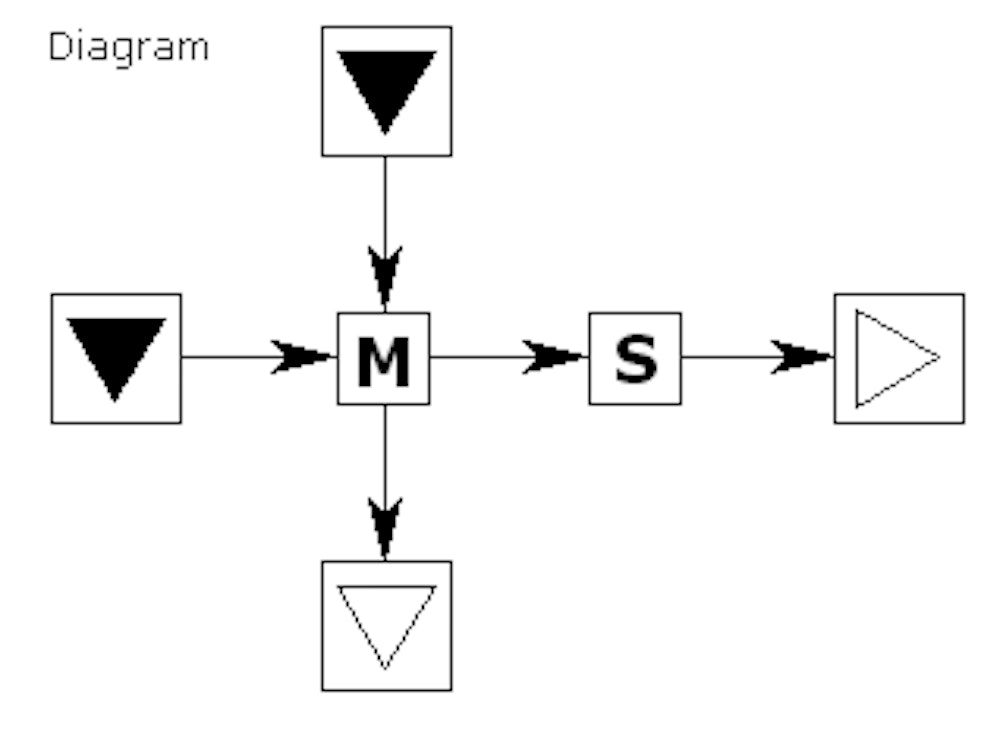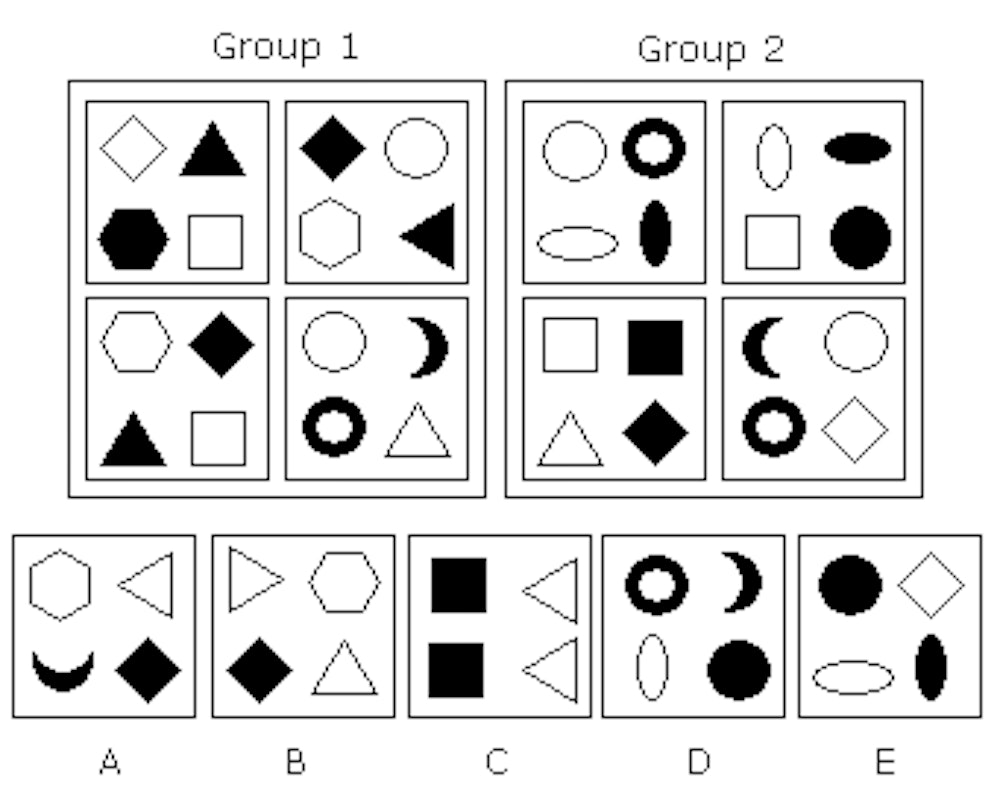Logical Reasoning Tests
Updated 10 June 2021
Logical Reasoning Practice Test
In this article Skip to section
Logical reasoning tests measure a candidate’s logic and problem-solving skills in a wide variety of ways.
These tests are used in recruitment, particularly when assessing graduates for entry-level positions.
Logical reasoning tests may seem daunting and somewhat alien, but they use the same reasoning processes we rely upon daily – just in more overt and abstract ways.
As with any recruitment assessment, understanding exactly what the test involves and practicing similar questions will help to prepare you well.
What are Logical Reasoning Tests?
Logical reasoning tests are a form of aptitude test commonly used during the recruitment process, especially in the corporate sector; investment banks, law firms, consultancies or accountancy firms, for example.
These psychometric tests aim to provide insight into your mental agility.
They most often require the interpretation and manipulation of statements, numbers, shapes and patterns.
The tests require the ability to calmly approach an abstract problem.
Questions will test candidates in a variety of ways but you may be asked to:
- Deduce trends
- Identify patterns
- Analyze arguments
- Draw conclusions
- Interpret relationships
- Identify flaws
Your score will display how quickly you can absorb and process new information and whether you have an aptitude for problem-solving and critical thinking.
Success in these tests is important, as it displays to a prospective employer that you are a deft candidate with a well-rounded mental capacity.
The name of the logical reasoning assessment you are presented with may vary depending upon the test provider.
The assessments may be referred to as logical reasoning tests, but may also be called inductive, abstract or diagrammatic reasoning tests.
There is overlap in the assessment areas of these styles of questions and the overall principle remains the same.
If you are sitting a logical reasoning test, it is prudent to find out which company will be providing the assessment so you can get more of an idea of the kinds of questions that are most likely to appear.
Common test providers include:
Logical reasoning tests may be used during the recruitment process for any position at any level but are most common for roles that have a significant problem-solving component and require high functioning logic.
They are most often encountered at the assessment center stage of the process but can also be used at the interview stage.
The Most Common Types of Logical Reasoning Test
Diagrammatic Logical Reasoning
The most common type of logical reasoning test you will encounter is the diagrammatic form.
Simply put, you will be asked to answer questions based on shapes and patterns.
There will be a written question posed and then multiple-choice options to choose from for your answer.
These tests commonly test your abstract and inductive reasoning skills as they will assess your ability to identify patterns or trends and extrapolate or reapply this logic to select the correct diagram to complete a sequence (or identify the ones which don’t).
Verbal Logical Reasoning
Another common form of logical reasoning test is the verbal logical reasoning test.
This type of test is comprised of a series of paragraphs of text. Each will then have its own set of questions for you to work through.
Most commonly, the questions will consist of a list of statements.
You will then be required to decide which statement is the most accurate response, based on the information you have been given.
Some questions may present just one statement and require a choice between ‘Yes’, ‘No’ or ‘Cannot Say’.
These tests are looking at your deductive reasoning. You will be assessed on how well you can use the information given to come to logical conclusions.
This style of logical reasoning test requires active and attentive reading.
It is a good idea to ask yourself questions as you read to make sense of the scope and detail of what is covered in the text.
This will help you make judgments as to the validity of the statements in the subsequent questions more rapidly.
Examples of Logical Reasoning Tests
Here you can find three example questions, similar to those you may encounter when taking a logical reasoning assessment:
Example 1
Look at the diagram below. In this process, the input shapes are being transformed by the functions 'M' and 'S'. Use the diagram to determine the effect each of these functions then apply them to the input shape in the question to arrive at the correct output.
 Logical Reasoning Tests
Logical Reasoning Tests Logical Reasoning Tests
Logical Reasoning TestsAnswer:
To tackle this question, work through each function in stages.
First, look at the vertical process in the diagram. A black inverted triangle is pictured. Function M renders this triangle without fill.
The horizontal process has an extra step but, as we have already worked out the impact of function M, we only need to focus on function S.
We can see that the output shape is without fill but has also been rotated anticlockwise by 90 degrees. This means that function S must cause the rotation.
Looking at the question, we can see the input shape goes through both functions. Function S will rotate the domino shape through 90 degrees anticlockwise so that it looks like answer C.
If we then apply function M to this shape, it will cause the fill colors to invert.
Therefore, the correct output shape is depicted in answer B.
Logical Reasoning Practice Test
Example 2
Which of the answer figures below belong in neither Group 1 nor Group 2?
 Logical Reasoning Tests
Logical Reasoning TestsAnswer:
When looking at this question under pressure, try not to get overwhelmed by the different shapes and look for distinct patterns or features that all figures in their assigned groups have in common.
The figures in Group 1 and Group 2 contain a mix of both straight-edged, curved, and curved and straight-edged shapes. This cannot, therefore, be the logic that is governing selection.
However, we can see that each figure in Group 1 and Group 2 contains two black shapes.
Figure B only contains one, so this figure does not fit into either group.
Note:
Be careful of simply moving on to the next question because you have identified a figure that serves as an answer.
Unless the question specifically asks for only one answer, there may be more than one option.
Ensure you work through all avenues of logic that govern each problem to guarantee you list all possible correct answers.
If we move along the figures in the answer block, we can see that figure D also does not depict two black shapes, rather it has three.
This means figure D also belongs in neither Group 1 nor Group 2.
So, not to miss any other possible answers, return to the figures in Group 1 and 2 once more, to see if you can identify any other rules that appear to govern the selection and layout of shapes.
If we look at how the shapes are arranged, we can see that the black shapes are either arranged diagonally opposite each other or vertically, one on top of the other.
Looking again at the answer figures, we can see that figure A contains two black shapes, but they are horizontally arranged rather than vertically arranged. Figure A, therefore, also does not belong in either group.
So, the correct answer is figures A, B and D.
Before you write down your answers, just double-check what the question was asking you.
It may seem obvious, but it is easy to misread ‘neither’ and answer the opposite question.
After spending time deducing the way the shapes in the patterns presented are governed, it would be galling to lose points because, when under time pressure, you accidentally answered the inverted question.
Example 3
Assuming the premises in the following text are true, what can we say about the conclusion drawn?
- Some employees of the cybersecurity company only drink coffee.
- Some employees only drink tea.
- Some drink both tea and coffee depending on the day.
- Some employees bring lunches.
- Some eat their lunches at their desk, whilst drinking coffee.
- Some never eat lunch at their desks.
There are some employees of the cybersecurity company who only drink coffee and never eat lunch at their desks.
Is the conclusion:
A) True
B) False
C) Uncertain
Answer:
Let’s read through the statements again. As we do, we can see that the conclusion drawn is based on an assumption that there will be some employees of the company that fall into both the coffee drinking and not eating lunch at their desk groups.
But do we have enough information to prove whether this assumption is correct or not?
We are told about the employees’ preferred beverages and that some employees do only drink coffee.
We are also told that some do eat lunch at their desk, while drinking their coffee.
Beware of these types of statements that are extraneous to the conclusion drawn, as they neither feature nor contribute to the assumption made.
We also know that some employees, even if they bring lunch, never eat their lunch at their desk.
Whilst it may be true that some employees fall into both categories suggested, there is not enough information provided through the statements to be sure of this.
The correct answer is, therefore, option C.
How to Prepare for Logical Reasoning Tests
- Before you begin to prepare for your logical reasoning test, confirm the type of test your prospective employer is using. Don’t be afraid to ask, as the term ‘logical reasoning’ can encompass many types of test.
- It is best to practice with questions closest to those you will encounter in the assessment, so trying to narrow down the question style is prudent. If, however, you are unable to gain any further information on the test style, be sure to practice both the diagrammatic and verbal logical reasoning style of questions.
- Attempt to work out what the correct answer, rule or sequence is before looking at the answer options. This means that your logic will not be influenced by any of the possible answers. It also ensures you double-check the logic of your answer upon viewing the options for selection.
- If you find yourself struggling to get to the correct answer in your practice sessions, work through some of the questions backward. Look at the correct answer and then figure out what rule/pattern/evidence led to that answer. This way, you will get used to working through the process of logic common in the questions.
Logical Reasoning Practice Test
- When you are practicing logical reasoning questions, make sure you time yourself. Sometimes, logical reasoning tests have strict time limits, so being aware of how long you might have for each question will help you when you are under pressure on the test day.
- The more familiar you become with logical reasoning tests, their format and the logic behind them, the faster and more accurate you will become at answering them. It is important to relax so that your brain can focus on correctly solving the problem.
Remember that, with adequate practice, you will be in a great position to showcase your logical reasoning skills, so be confident and you’ll be well on your way to success.